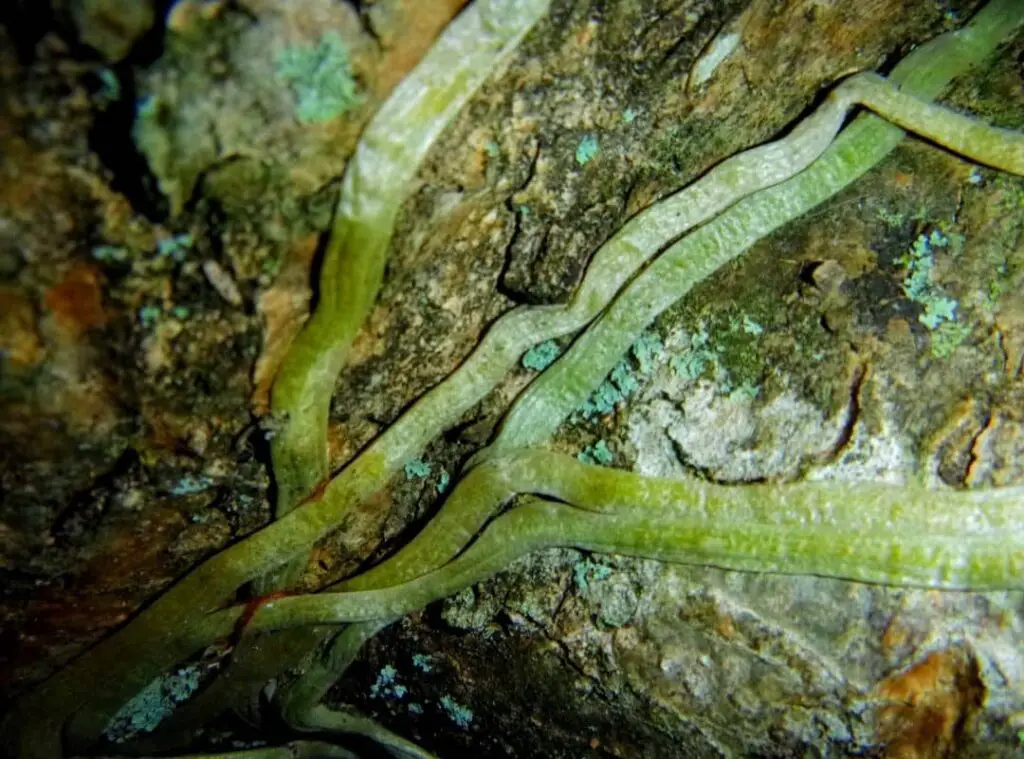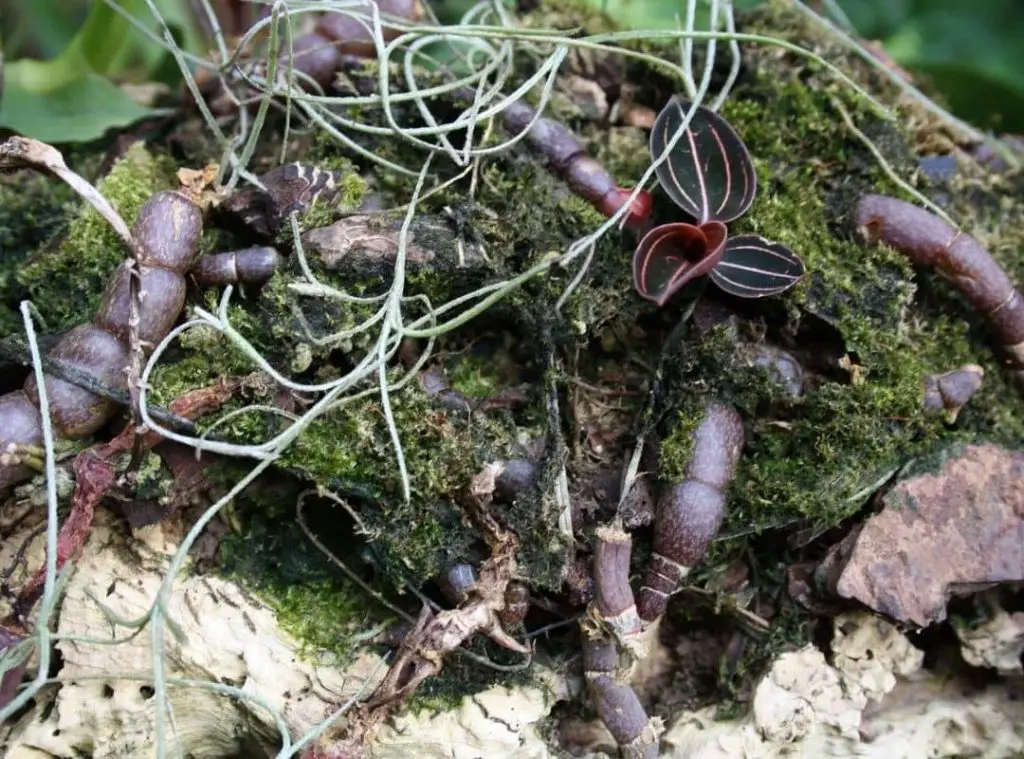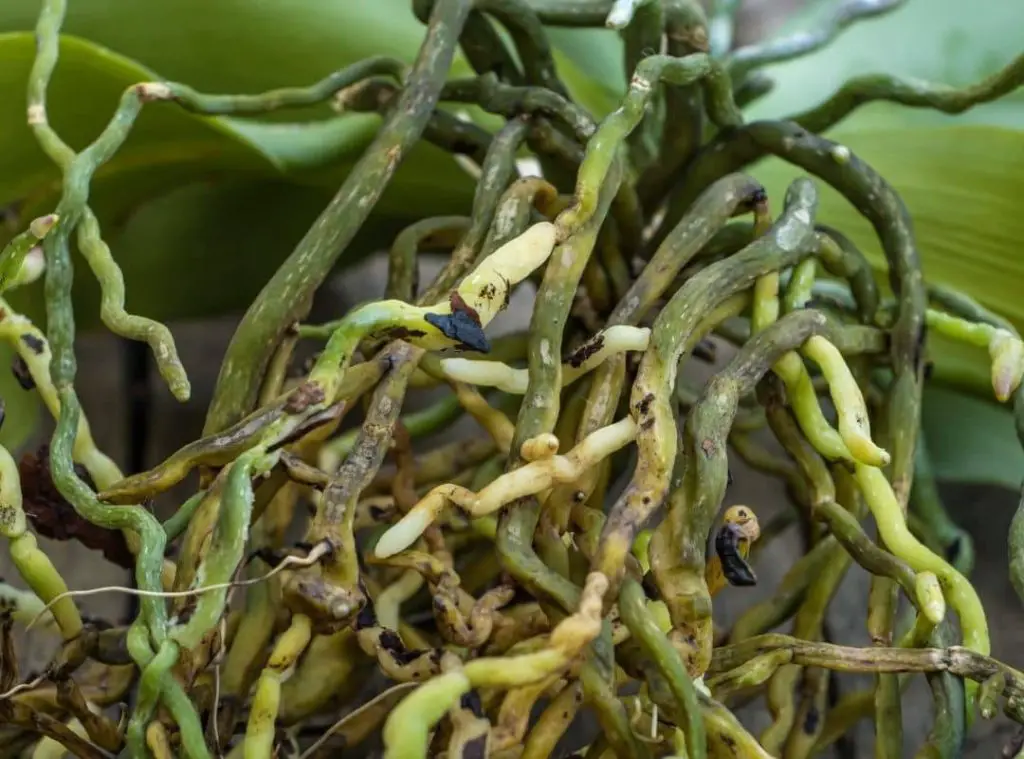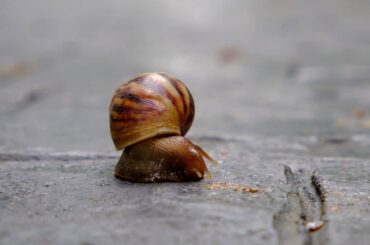Perhaps you’ve noticed greenish, slimy growths around your orchid plants and are stumped as to what they are. Is there an infection here? Is your orchid plant going to be harmed? And How do you get rid of algae on orchids? Once you notice any slimy green growth around your plant, what would be the steps that you should take? This article will provide you with all of the information you need.
Algae are the green stuff that you may see around the roots, substrate or potting mix, and walls of the pots where your orchid plants are.
The presence of algae simply indicates excessive moisture and humidity levels in the plant environment. Where there is an abundance of moisture, nutrients, and light there, you can see algae growth.

Algae do not pose a serious threat to the orchid plant, but it would be better if they were absent. Algae can hinder the natural beauty of the plant. No matter how beautiful flowers it bears or how much the plant costs, too much algae on your orchid plant gives an inferior look to the plant, making it look like the plant is in poor hygiene.
What is algae?
Algae are photosynthetic organisms. That means, in the presence of sunlight, water, and carbon dioxide gas, algae can produce chemical energy and oxygen gas. Due to the presence of chlorophyll (this is why algae have an apparent green hue), they are able to perform photosynthesis.
Algae range in size from single cells to vast organisms that can be seen with the naked eye. Water, sunlight, and nutrients are the basic requirements of algae to grow. Many algae can produce spores that can tolerate adverse environmental conditions and are able to develop as new algae cells once the desirable conditions are met.
In this sense, you should maintain the proper surroundings of the plant daily in order to prevent the return of algae in the future. Though algae were removed from a particular place for a while, there will be a possibility for them to return when favorable conditions are reached.
Sometimes, moss can be misidentified as algae. Accurate identification is crucial when treating plants for algae. Here we have mentioned some tips for you to differentiate moss and algae. Moss is somewhat springy but algae are not. Moss is a fibrous or feather material, whereas algae are slimy and lack a fibrous structure.
Why do algae grow on orchid pots?
As mentioned earlier, algae require water, nutrients, and light to grow. When you leave the orchid pot uncovered to water and light for a period of time, you will experience green slimy growth development. Over-watering is the prime reason for algae growth. It makes the pot damp, encouraging the algae growth.
Usually, we use coconut fiber and cork nuggets like substances as the growing medium for our orchid plants. Those substances are having a good ability to retain water. If we water them more often, they will hold water most of the time, making the medium suitable for algae growth.
Insufficient drainage in the pot triggers this condition. Transparent pots make light penetration through the pot easier. Sunlight speeds algae growth.
When there is ample water inside and enough light, algae will happily grow. Algae will be almost impossible to avoid if you use ponds or shallow well waters to irrigate your plants.
In general, algae are commonly found in ponds and shallow well water. There is room for contaminating your pot as well as the plant with algae when you use surface water bodies as the water source for irrigation purposes.

Why do algae grow on orchid roots?
As with growing on pots, algae can access the orchid root system when they are exposed to excess moisture and light for a sufficient period of time. Algae first enters the plants through airborne spores. When the environmental conditions are compatible, spores start to develop into cells.
If you are over-watering your plants, algae can grow on the roots. Some orchid roots dig down into the growing medium of the plant. They are not exposed to light. When compared with buried roots, aerial roots are more susceptible to the algae as they provide enough light for the algae to grow.
You may probably see algae growth on orchid roots on the surface of the growing substrate. It is difficult for light to reach the buried roots of the plant. Remember that no light means no algae growth. Often, orchids are grown on organic substrates or charcoal. They are ideal substrates for algae to use as a source to fulfill their carbon needs.
If the orchid plant is potted on such a substrate algae grown closer to the root zone can easily invade the root system of the plant. Do not worry. Usually, most orchids (e.g. Phalaenopsis, Dendrobium, Camaridum, and Pinalia) have an aerial root that has a thick greenish center.
The center layer of aerial roots carries chlorophyll pigments. They actively take part in the photosynthesis process. There is a thin whitish layer surrounding the center, which is called the velamen. It is composed of dead cells. Once the velamen becomes soggy, it will be transparent, showing the green center beneath. This is obviously a normal condition.
Symptoms
In earlier stages, you may see a slight greening of the surface of the medium. With time, the algae develop into large clusters around the root system as a thick layer. Once you touch them, you can feel the slimy nature of algae.
Symptoms of algae infestation are; oxygen deprivation, pH fluctuations, pest infestations, and fungal diseases. Due to oxygen deprivation, you may see distorted growth of the plant. Sometimes, the leaves will wilt and turn yellow.
Once carbonic acid is accumulated around the root system, pH fluctuations occur, causing wilting, growth stunting, and leaf spotting of the plant. Pest and fungal damages also cause wilting and growth stunting of the plant.
Are algae grown on orchid roots bad?
Algae do not do serious harm to your orchid plants. In some situations, your plants can get certain obvious benefits from having algae with them. However, if you let them grow massively, they can become detrimental for sure. On the plus side, algae release oxygen gas upon photosynthesis. This oxygen is useful to the plant roots, otherwise, they have to solely depend on the natural air circulation.
Algae help clean the orchid pot by consuming decaying roots. Furthermore, they can absorb some of the toxins released by the plant. On the other hand, algae grow very fast, even within a few days, and if you let them grow out of control, after proliferating enough, they begin to compete with the plant for fertilizer nutrients. As a result, plant growth can slow down.
If you’ve used a transparent pot, algae will spread throughout the wall as a thick layer. So, light may no longer penetrate the pot, which ultimately leads to root decay. During the daytime with the presence of light, algae use up carbon dioxide and release oxygen gas via photosynthesis.
This process switches at night. At night, since there is no light, algae put out uptake oxygen and release carbon dioxide gas, potentially suffocating roots. When carbon dioxide gas is dissolved in water, it forms carbonic acid and the acidity around the root zone will be increased. That will affect the root health.
As roots do, algae acquire space within the pot. The extensive growth of algae inside the pot limits air circulation. In other words, the gas exchange will be impaired. Keep in mind that poor air circulation may induce the growth of pathogens such as fungi and bacteria, which are capable of causing severe damage to the plant.
Anyway, it is good to keep your pot and the roots of the orchid plant free from algae. It ensures not only proper growth of the plants but also maintains the good visibility of your beauties.

How do you get rid of algae in orchid pots?
You can remove algae from the pot simply by washing. Gently remove the plant and the growing medium before washing. Take the pot to the sink and wash the entire pot using a detergent, or a soap, along with a bleach solution. Brush the pot thoroughly until there is no sign of algae. Once it is clean, your pot is ready for repotting.
If there are any leftover algae on the pot, it will grow back again. So, before repotting make sure there are no remaining algae on the pot. The presence of algae simply implies that you were over-watering the plant. Algae always need water and moisture to thrive.
Without under-watering the plant, you may not be able to control the algae infestation. Water your plant as just enough to fulfill the water requirement of the plant. At the same time, be sure to improve the pot’s drainage. It is important to avoid the exposure of the plant to high humid conditions for days.
Block the light that algae receives. If your pot is transparent, keep it inside a solid pot. Usually, clay pots are ideal for orchids. Keep your pot as light as possible away from it. If your irrigation water comes from a surface water body, filter it or treat water before using water for your plant.
This will help you prevent contamination with algae. You can water the plant with hydrogen peroxide once a month. Hydrogen peroxide, a well-known algaecide, helps kill the algae in your pot.
How do you get rid of algae on orchid roots?
Hydrogen peroxide (H2O2) or peroxyacetic acid can be used to remove the algae on the roots. Avoid direct application of chemicals onto the roots. First, dilute the algaecide before treating the plant roots. You should check the concentration of the hydrogen peroxide solution before applying it on the plant .
Avoid using higher concentrations of these chemicals as they can cause phytotoxicity. Studies have revealed that higher concentrations of hydrogen peroxide damage roots, foliage, and blooms. Ideally, 3% hydrogen peroxide is good to treat algae. You can apply the algicide either as a spray or as a solution to soak the roots.
If you wish to apply it as a spray, make sure to adjust the nozzle of your spray bottle as it delivers a stream rather than a fine spray. If the spray is too fine, the deposition of the product on the target place will be minimal. Hence, the utilization of the stream is ideal.
If the orchid plant is potted, remove it from the pot. Spray the product onto the roots. Cover all the roots with hydrogen peroxide and let them dry. Finally, place the plant in the pot and fill the substrate. It would be better if you could change the potting mix or whatever the medium you used for the plant. This minimizes the risk of contamination with algae.
Another way to treat the plant is to soak the plant in the algaecide solution for a few minutes. If the algae infestation is low, you can just spray the product onto the substrate and the roots of the plant while it is in the pot.
If you are reluctant to use any chemicals on your plant, warm soapy water will help you. If the algae infestation is too high, apart from applying algaecides, Phalaenopsis and Phragmipedium like orchid varieties should be repotted sooner to discourage the algae growth.

Prevention methods
It is obvious that prevention is the best. Actually, it is not tricky to prevent algae growth on your orchid plants. It needs some little strategies. All you should do is restrict the basic requirements (water and light) of algae. You can prevent algae growth on your orchid plants unless you provide favorable conditions for them.
In order to prevent algae growth, you should change the growing conditions so that they are less suitable for algae to develop. Restriction of the basic needs of algae is the key to preventing their growth. Avoid overwatering the orchid plants. Water the plants only as necessary. Some orchid varieties like to be moist at all times, but some do not.
Orchids that are having a thick base of stem, such as cattleyas can store water and nutrients inside the stem. Such orchids need less water. So, frequent application of water is unnecessary for such types of orchids. But some orchids, like Phalaenopsis and Paphiopedilum, should be evenly moist all year. Their water requirements are relatively high.
If you are not sure about the water requirement of your orchid variety, just look at its stem. Before you water the plant, be certain to check that it is reasonably dry enough. In this sense, do not come to a conclusion just by looking at the surface of the potting material.
Sometimes, though the surface looks dry, the inside might not be. How do you decide the proper time to water your plant? Just lift the pot. If it is light, it probably does not need watering. Alternatively, dip your finger 1 to 2 inches deep into the potting mix and feel the moisture inside. If you feel the medium is wet, do not water the plant.
Usually, orchid plants need less water when the environment is cold and humidity is high. And also the plant needs a little water when it is not actively growing. But you may water the plant more often when the humidity is lower, the temperature is higher and the plant is actively growing.
Try to get an idea about the water requirement of your orchid plant with respect to the ambient environmental conditions. Do not let the plant remain moist for a long time. Morning is the best time to water your plants. It helps the plant dry out before night falls. Try to keep your pot as dry as possible.
To prevent the growth of algae, pay your attention to the water source too. Unlike using tube water, if you use pond water for irrigation purposes, there might be a chance of contamination with algae. So, in such situations, filter water before irrigation to the plants.
Selection of the pot is also crucial to prevent algae on plants. Some orchid varieties (e.g. dendrobium and cattleya) have extensive root growth. So, you should select a relatively large pot for such kinds of orchids. If the pot is too small to hold a sufficient amount of growing medium, you may have to water the plant frequently, which can result in algae growth.
Place your orchid plants in the proper spot. It is good to place the pot near a window or in a place where it is exposed to wind. This encourages the plant to dry quickly between watering’s. You should never let the orchid plant hold dampness for an amplified period of time.
If the orchid pot is transparent, keep it inside a clay pot. It would be better if you can use clay pots rather than transparent pots, as they discourage light penetration through the pot. Keep in mind no light; no algae growth.
Read Next : Black Spots On Orchid Flowers | Is It Dangerous ? |





